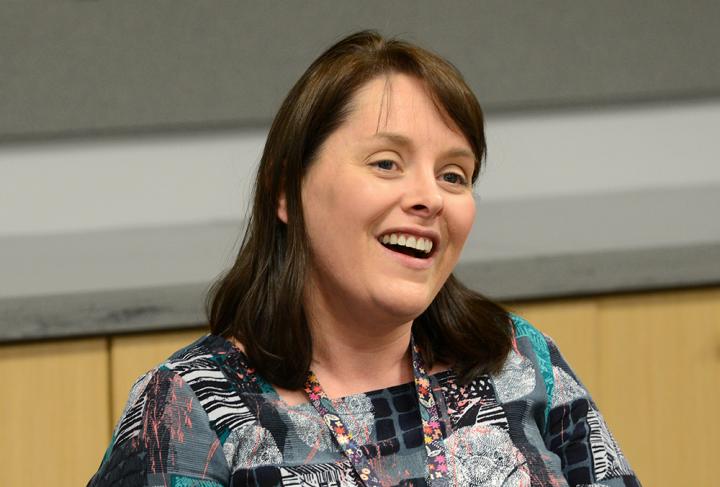Dr Jo Stevens on bacteria and the immune system
Investigating bacterial infections, how the immune system reacts to those and the reward of supervising students

Dr Jo Stevens is a group leader at the Roslin Institute, doing research on bacteria that cause disease in people or animals. In this interview she told MSc Science Communication student Kevin O’Leary about her work.
How would you describe your research?
My group conducts research on bacteria that cause disease either in humans or in animals. Many bacteria will enter a cell they are infecting, known as the host, and set up a protected niche, where they can go undetected by the immune system and replicate.
So we are interested in understanding how these bacteria are able to do that. How are they able to get inside the cell in the first place? What do they do to that cell, to make sure it doesn’t kill them and allows them to persist and replicate over a long period of time?
Could you please give an example?
For instance, the bacterium that causes tuberculosis gets into the host cell, and there it sleeps. Sometimes it just sits there for years and years – we call this latency. And then it is only later in life, when the host’s immune system is affected, that these bacteria replicate too much and kill the host.
So we are interested in both what is happening in the bacteria and what is happening in the cell to allow that dynamic relationship, called a host-pathogen interaction. We want to know either what is happening to the bacteria to allow it to carry on living, or what causes the cell to say, ‘hang on, there’s bacteria here, we’ve got to kill it’.
What are the possible applications of this research?
This is basic research that gives a greater understanding of how harmful bacteria are interacting with cells of the human body and how we could potentially target these interactions to kill the bacteria.
If we can understand how these bacteria survive and what they need to live inside that host, we could identify new antibiotics and use this information for drug discovery.
The number of antibiotic-resistant strains of bacteria is growing, so there is a need for these novel therapies.
What methods do you use in your research?
We use a lot of microscopy and work with a lot of pretty images of fluorescent cells. We use it to look at cellular processes called actin-based motility, through which cells change shape in response to what happens in the environment around them. There are very few bacteria that do this, but the bacteria we work on generally do this so that they can enter a new infected cell and replicate.
We also use proteomics which is a technique where you take multiple samples of infected cells and study the proteins involved in the immune response of the bacteria or of the cells they infect. Looking at this gives us an idea of which proteins, both on the bacteria and the cell side, play a role during infections.
How did you end up in this field of research?
I spent 11 years at the University of Reading where I did my undergraduate degree in microbiology, my PhD in virology and two postdoctoral research positions working on platelet blood coagulation. I then moved into bacterial-host pathogen work with the Institute for Animal Health in Compton, where I worked for five years before coming here to Roslin.
What do you feel is the most rewarding part of your research?
I’ve always loved the basic science, being in the lab and doing the science aspect of it, but since coming to the university eight years ago, what I find more rewarding is my role in postgraduate student support.
I have had a lot of PhD students come through that have trained with me and developed into great scientists. Helping them and knowing that I’ve trained and supported them through that process has been the most rewarding part.


